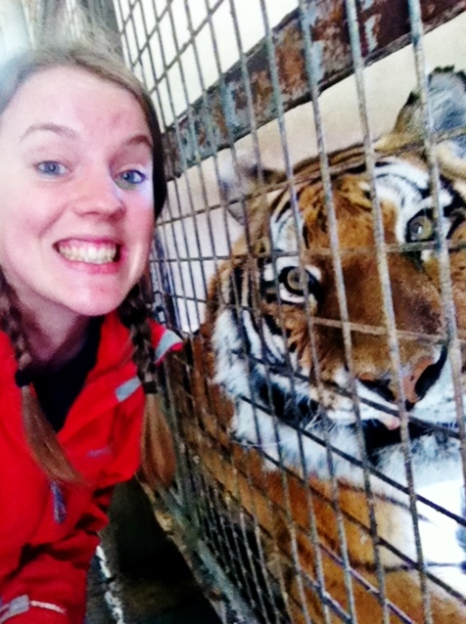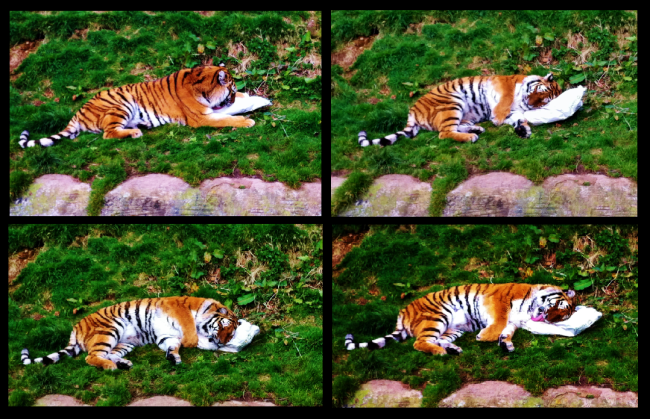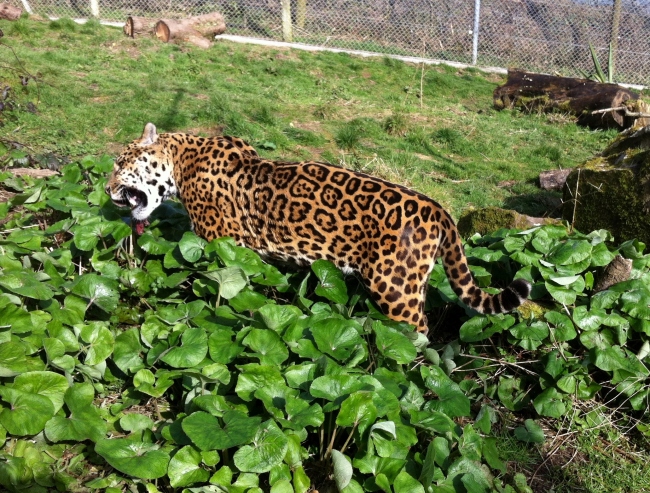I would like to begin this post by apologising for the length of time since my last post. Unfortunately life sometimes gets in the way of volunteering fun. I won’t bore you with the details of working full time. It’s nowhere near as fun as being pecked by a Rhea (Zazu you cheeky devil).
Turns out a lot happens in three months at a zoo. Since my last day there, there has been quite a turnover in animals! Alongside many other changes, a male Lion has been welcomed to the family, after the passing away of Taz the Tiger (the terrifying aunt to the two giant housecats). The long term aim is to introduce him to Josie the female. They are currently in enclosures next to each other, so they can see each other. Apparently Josie is petrified of him at the moment, which is surprising as he seems so calm and lovely, whereas she is a angry madam.
My first day back consisted of a lot of physical work! If you need to lose a few pounds after Christmas (no comments please), I would recommend zookeeping for a great full body workout! I am quite stiff today after a day of cleaning different houses, removing dirty bedding from the gazelle (wet straw is really quite heavy), scrubbing an otter pond (it’s never looked so clean) and chopping up Christmas trees! Many people have donated their old trees to the zoo to use for animal enrichment. So yesterday we chopped the branches of one side of a few, to use as a nice screen in the aviaries. It looked lovely.
Unfortunately I don’t think I have any “what did Tash do this time” stories for this post! Short of being pecked by Zazu. Didn’t hurt, but it did surprise me. I also had to pretend that picking up crickets didn’t freak me out, whilst I collected 45 for the Meerkats. I chickened out of using my hands and opted for tweezers. Then there’s the classic meat delivery “I hate it but I can’t look away” moment. A normal meat delivery would consist of some boxes of steaks and mince meat. Not at a zoo. The meat delivery is a room of whole animals. Hung up. I’ll stop there in case you decided to read this whilst you ate dinner. I’m sure your imagination can fill in the rest.
So actually, having said there weren’t any entertaining stories, I have just come up with three. Zoos are non-stop entertainment.
Animal of the week – the Rhea (Rhea Americana or Rhea Pennata)

This is Zazu, the little devil that pecked me. Actually it’s not, but I’m trusting that none of you can identify these particular Rhea and will just believe what I tell you.
Rhea are large, flightless birds. Similar to ostrich but smaller and much less threatening (unless it’s called Zazu). They are from South America, and even within this continent are limited to a few countries of: Argentina, Bolivia, Brazil, Chile, Paraguay, Peru and Uruguay. With the exception of the small colony in Germany that has developed after a few escaped from a farm! They are grassland animals and live in flocks of between 20 and 25 birds. They are usually herbivorous, eating leafy plants, but will also occasionally eat fruits, insects and even small rodents and reptiles!
Rhea of polygamous and a male might try and mate with up to 12 females. He will try and impress the ladies with a loud booming call, the sort of noise you would not expect to come from a bird. He will then make a funny run, using his wings alternating with his legs (it’s hilarious to see). If he is successful, the female will lay up to 60 eggs. The male will incubate these, and will sacrifice some outside the nest to act as a decoy for predators. When incubating, the male will charge at any threat to the eggs, and may also use a subordinate male to incubate the eggs instead. Once the eggs have hatched, it takes 6 months for a Rhea to become fully grown, but they will not mate until they are 2 years old.










